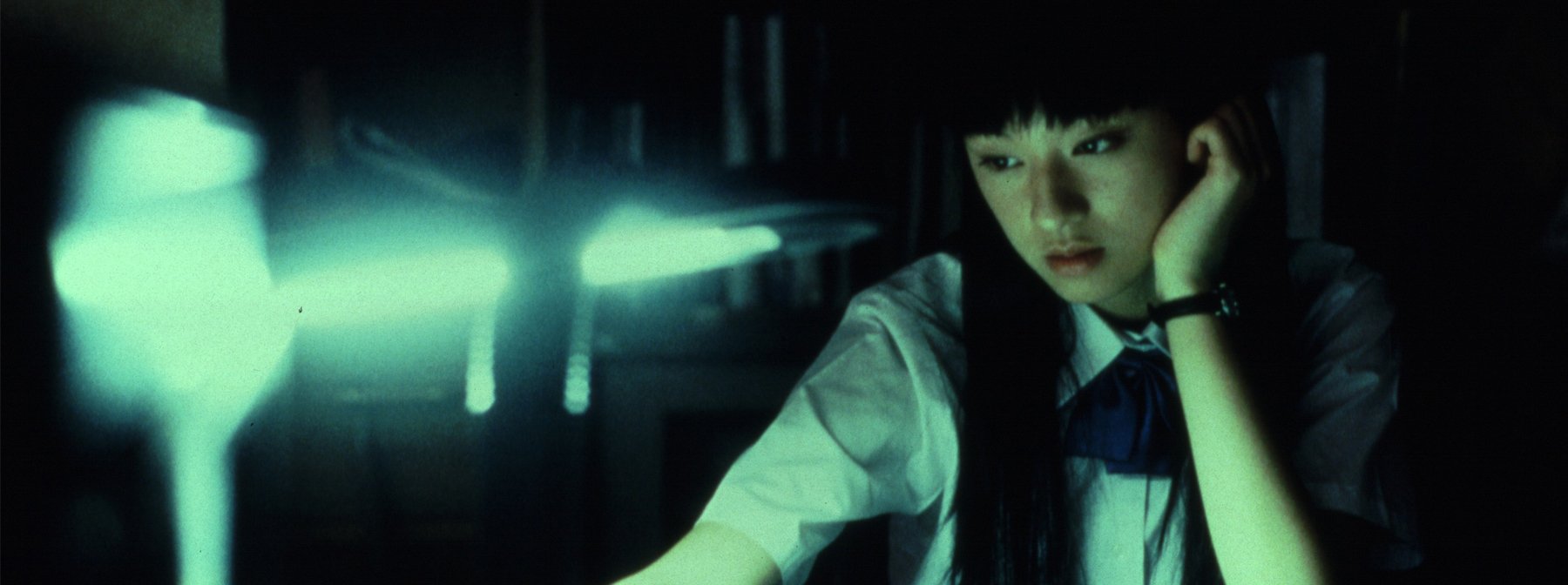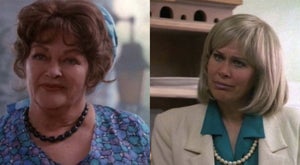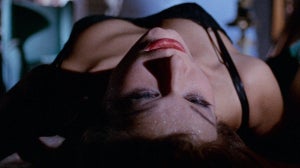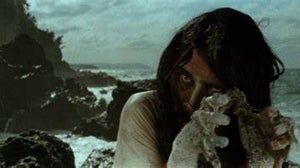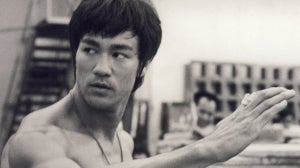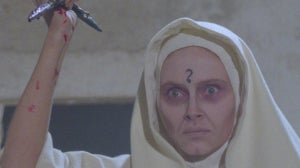
Using now-defunct distribution labels like Tartan Asia Extreme and late-night screenings on Channel 4 as their vessel, long-haired ghouls like Sadako (Ring) and Kayako (Ju-on: The Grudge) completed a wave of ghostly encounters that left UK audiences petrified, as film studios in Hollywood turned to their own reincarnations. Kinji Fukasaku’s Battle Royale and Takashi Miike’s Audition maximised this profound cultural moment with a duo of brilliant and bloody thrillers. Kiyoshi Kurosawa’s Pulse and Hideo Nakata’s Dark Water offered their own Japanese chills thereafter, prompting another round of less-successful US remakes.
It was a wonderful and terrifying time to be a fan of Japanese cinema — and one that we can relive again in 2022, with all of the above gratefully available again via Arrow Films. But with the release of a new box set collating various entries of Takashi Shimizu’s classic Ju-on franchise, the question remains — what else was there beyond the void? Read on for a list of five obscure Y2K J-horrors worth seeking out… if you dare.
Ju-on: The Curse (Takashi Shimizu, 2000)
Lesser seen than most subsequent entries, Shimizu’s original TV movie is arguably the purest and best of the entire Ju-on franchise.
Much like its sequel-remake Ju-on: The Grudge, Ju-on: The Curse is an anthology of spooky stories revolving around a haunted house. Inside that house lurks the otherworldly spirits of a family murdered by their patriarch — including wife Kayako, child Toshio, and a black cat named Mar — who gradually appear throughout the narrative to haunt folk like soon-to-be star Chiaki Kuriyama (Battle Royale; Kill Bill) and Takeshi Kitano affiliate Yūrei Yanagi (Hana-bi; Ring).
It’s the super lo-fi aesthetic and naive charm that works so well — particularly given that the film would emerge in such close proximity to VHS-fearing classics like Hideo Nakata’s original Ring or even The Blair Witch Project. And while there is at least one scene featuring some gruesome visual effects, The Curse largely foregoes garish jump scares in favour of malfunctioning CD walkmans, deserted school buildings, strange phone calls and unnerving attic crawl spaces. It all contributes to a wonderfully creepy atmosphere.
With the help of influential J-Horror figureheads like Kiyoshi Kurosawa (Shimizu’s teacher at the Film School of Tokyo) and Ring screenwriter Hiroshi Takahashi, the Ju-on series took on new life as a feature film franchise thereafter, with Shimizu also directing the Hollywood remake in 2004.
https://www.youtube.com/watch?v=Aw4CgCznipU
Seance (Kiyoshi Kurosawa, 2000)
Shimizu’s mentor (whose other star students include 2022 Oscar-winning Drive My Car director Ryusuke Hamaguchi) already cemented his place in the J-horror history books with his psychological horror classic Cure in 1997. But the year before he’d deliver a second masterpiece in the supernatural and technophobic Pulse, Kurosawa would complete one of his most overlooked highlights via the television movie Séance.
Produced by Kansai TV (the same financiers as Shimizu’s Ju-on:The Curse) for just $200,000, Séance reunites Kurosawa with leading man Kōji Yakusho (Cure; Retribution) in a hypnotic story concerning a sound technician, a psychic medium and an otherworldly presence in a quiet city suburb.
It’s brilliantly atmospheric and positively chilling, thanks largely to Kurosawa’s mastery of frame composition, his sophisticated utilisation of off-screen space, and the film’s terrifying sound design. There are several unsettling brushes with the supernatural — an apparition in a coffee shop and an encounter with a doppelgänger among them — but it’s the brooding and bleak climax that really sticks.
Long Dream (Higuchinsky, 2000)
The third TV movie on this list is a one-hour companion piece of sorts to director Higuchinsky’s other J-horror film: Uzumaki. Like the aforementioned story of a town plagued by strange spirals, Long Dream is also an adaption of a work by Junji Ito — the master of horror manga best known as the creator of the Tomie franchise.
It’s the tale of a man afflicted by a terrible curse. Each night, in a largely deserted hospital building where he is being monitored, his disturbing dreams seem to increase in length to the point of months and even years. In one, he’s a starving soldier forced to eat his own feet. In another, he’s endlessly searching for a bathroom. The latter endured for what felt to the patient like eight full years — and these dreams are only getting longer.Full of OTT acting and low-budget charm, Long Dream is a fun slice of zany b-movie horror — with the gaudy make-up in particular offering parallels to classics like Re-Animator. Elsewhere, besides the convulsions, swollen heads and bulging eyeballs, a few glimpses into the other side of consciousness seem inspired by the visionary creativity of another Japanese horror legend: House director Nobuhiko Obayashi.
https://www.youtube.com/watch?v=zVIz5HwRISw
Marebito (Takashi Shimizu, 2004)
In between the productions of Ju-on: The Grudge and its American remake, director Takashi Shimizu shot this Lovecraftian gem on digital video with cyberpunk director Shinya Tsukamoto as the lead. The whole shoot apparently took just eight days, but the result is a strange and foreboding work that is arguably Shimizu’s most atmospheric horror film.
After opening with a close-up of Tsukamoto’s despairing face, the film quickly backtracks to the beginning of his character’s journey. Masuoka’s a freelance cameraman, and he’s recently become transfixed by a look of terror seen in the eyes of a man committing suicide in a subway station. Thereafter, Masuoka decides to give up his antidepressants in a bid to discover the depths of such fear himself. His quest then takes him deep into a network of hidden tunnels and passageways beneath Tokyo — where eerie noises, cavernous “mountains of madness”, and shackled entities are waiting to be found.Unsettling and ambiguous from start to finish, Marebito scored a slot at Venice in 2004 before receiving UK distribution via cult label Tartan Asia Extreme. Sadly, that release is long out of print — rendering it an obscurity in the present day.
https://www.youtube.com/watch?v=foRxibv2qHA
Gemini (Shinya Tsukamoto, 1999)
Tsukamoto has delivered his fair share of horror-infused works across an impressive and singular career — from cyberpunk body horror in Tetsuo: Iron Man to psychotronic horror fantasy Hiruko The Goblin. His 49-minute claustrophobic nightmare Haze might be the most obvious follow-on point after watching Shimizu’s Marebito; both star Tsukamoto in a hellish descent into the dark unknown, and are largely filmed using handheld cameras. But his most overlooked horror work — Gemini — might also be his best.
Set in Feudal Japan, Gemini combines classic J-horror staples like evil doppelgängers, Noh theatre-inspired ghouls, repulsive imagery and even ominous wells. It’s the story of a military doctor treating plague victims in a rural village, who finds people close to him dying unexpectedly. The mysterious figure responsible for their deaths, it turns out, is a dead ringer for the doctor himself.
The film was notably inspired by the works of Edogawa Ranpo, the influential Japanese horror and mystery writer who modelled his pseudonym on that of Edgar Allan Poe (The Pit and The Pendulum). Ranpo is responsible for several further Japanese horror classics through the virtue of their film adaptions — with The Horrors of Malformed Men and Rampo Noir offering two great examples of his eerie and grotesque imprint on Japanese horror cinema.
https://www.youtube.com/watch?v=Uib42ItprBA

